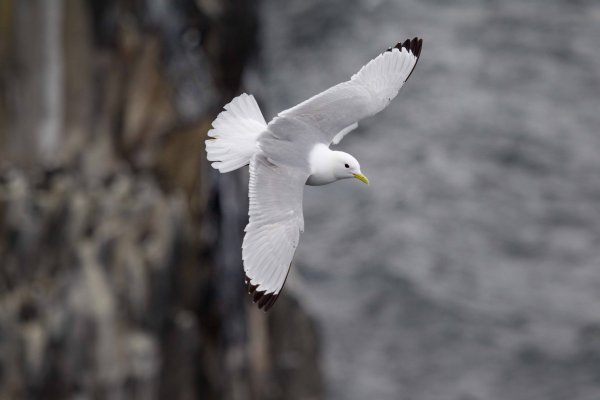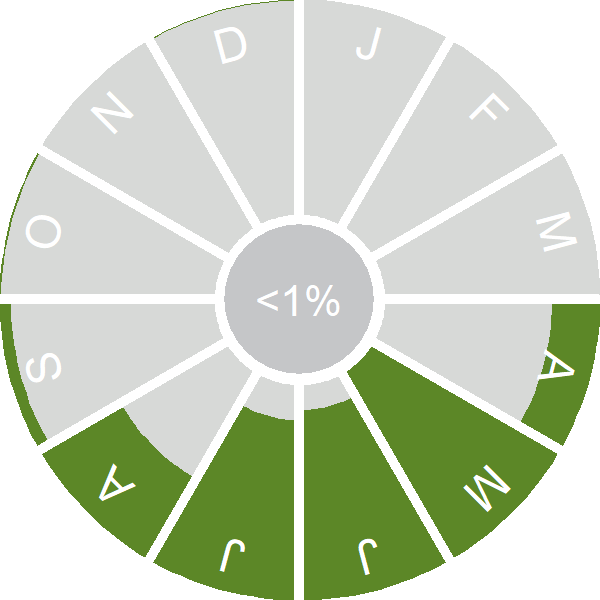Little Tern
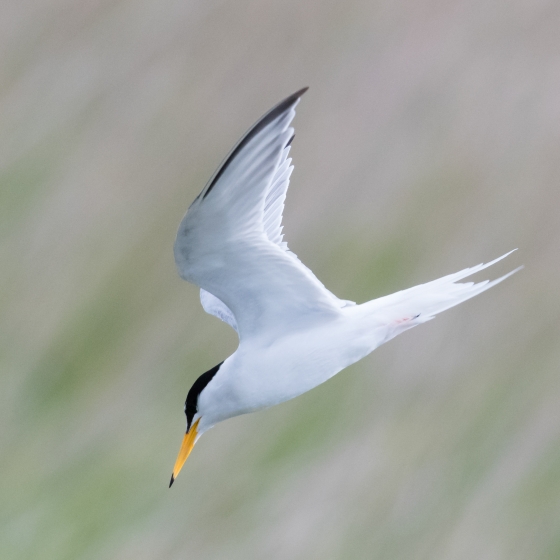
Introduction
Little Tern is a summer visitor to our shores, arriving in April to coastal breeding colonies. This small tern favours sand or shingle for nesting, and nests at lower densities than our other breeding tern species.
Elsewhere in its wider breeding range the Little Tern occupies both coastal and inland sites; British and Irish birds are almost entirely coastal in habits, its colonies sometimes threatened by the presence of visiting Foxes or the disturbance caused by human activities.
Wardening of Little Tern breeding colonies is a key conservation tool, with efforts directed towards larger colonies in areas of human activity.

Key Stats
Identification
ID Videos
This section features BTO training videos headlining this species, or featuring it as a potential confusion species.
Tern Identification Workshop Part 2: Roseate, Sandwich and Little Terns
Songs and Calls
Song:
Call:
Status and Trends
Conservation Status
Population Change
The Little Tern is monitored by Seabird Monitoring Programme (JNCC 2022 or link to wesbite) and the Rare Breeding Birds Panel. The Atlas maps show range losses since 1968–72 (Balmer et al. 2013). The population fluctuated between 1969 and 1975 when numbers peaked at 2,800 pairs, but subsequently declined (Ratcliffe et al. 2000), with a mean of 1,375 breeding pairs counted over the five-year period 2015–2019 (Eaton et al. 2021). However, numbers have been stable over the 15 years to 2019 (Eaton et al. 2021)
Distribution
Little Terns nest mostly on beaches on mainland Britain & Ireland. In Britain, c.75% of the population breeds in England, the majority on three sections of coast: the Humber/Lincolnshire, East Anglia and the Solent.
Occupied 10-km squares in UK
or view it on Bird Atlas Mapstore.
European Distribution Map
Distribution Change
The breeding range change map principally captures a picture of colony loss, particularly from the Thames Estuary and Kent, Anglesey, the Solway, the outer parts of the Firths of Forth and Tay, and throughout the Irish coast. The most significant gains since the 1988–91 Breeding Atlas have been the cluster of new colonies in northeast England and northeast Scotland.
Change in occupied 10-km squares in the UK
or view it on Bird Atlas Mapstore.
Seasonality
Little Terns are localised summer visitors from April/May onwards, departing in August and September.
Weekly pattern of occurrence
The graph shows when the species is present in the UK, with taller bars indicating a higher likelihood of encountering the species in appropriate regions and habitats.

Movement
Britain & Ireland movement
Foreign locations of birds ringed or recovered in Britain & Ireland
Dots show the foreign destinations of birds ringed in Britain & Ireland, and the origins of birds ringed overseas that were subsequently recaptured, resighted or found dead in Britain & Ireland. Dot colours indicate the time of year that the species was present at the location.
- Winter (Nov-Feb)
- Spring (Mar-Apr)
- Summer (May-Jul)
- Autumn (Aug-Oct)

European movements
EuroBirdPortal uses birdwatcher's records, such as those logged in BirdTrack to map the flows of birds as they arrive and depart Europe. See maps for this species here.
The Eurasian-African Migration Atlas shows movements of individual birds ringed or recovered in Europe. See maps for this species here.
Biology
Productivity and Nesting
Nesting timing
Egg measurements
Clutch Size
Survival and Longevity
Survival is shown as the proportion of birds surviving from one year to the next and is derived from bird ringing data. It can also be used to estimate how long birds typically live.
View number ringed each year in the Online Ringing Report.
lifespan
Survival of adults
Survival of juveniles
Biometrics
Wing length and body weights are from live birds (source).
Ring Size
Classification, names and codes
Classification and Codes
- Order: Charadriiformes
- Family: Laridae
- Scientific name: Sternula albifrons
- Authority: Pallas, 1764
- BTO 2-letter code: AF
- BTO 5-letter code: LITTE
- Euring code number: 6240
Alternate species names
- Catalan: xatrac menut comú
- Czech: rybák malý
- Danish: Dværgterne
- Dutch: Dwergstern
- Estonian: väiketiir
- Finnish: pikkutiira
- French: Sterne naine
- Gaelic: Steàrnag-bheag
- German: Zwergseeschwalbe
- Hungarian: kis csér
- Icelandic: Dvergþerna
- Irish: Geabhróg Bheag
- Italian: Fraticello
- Latvian: mazais zirinš
- Lithuanian: mažoji žuvedra
- Norwegian: Dvergterne
- Polish: rybitwa bialoczelna
- Portuguese: chilreta
- Slovak: rybár malý
- Slovenian: mala cigra
- Spanish: Charrancito común
- Swedish: småtärna
- Welsh: Môr-wennol Fach
Research
Causes of Change and Solutions
Causes of change
Population decline has been linked to reduced productivity; the main drivers behind this are unclear but disturbance, predation and flooding may have contributed (Ratcliffe et al. 2000). Little Terns nest on beaches which can change substantially from one year to the next and the species can shift colony location in response to predation and habitat change and is also highly susceptible to disturbance (JNCC 2012). Intensive management across major UK colonies, including protection and habitat restoration and creation, has been successful at increasing breeding productivity, but population models suggest that this increase will not be sufficient to reverse population declines and that further solutions are needed (Wilson et al. 2020).
Publications (3)
The status of the UK’s breeding seabirds
Author: Stanbury, A.J., Burns, F., Aebischer, N.J., Baker, H., Balmer, D., Brown, A.F., Dunn, T., Lindley, P., Murphy, M., Noble, D.G., Owens, R. & Quinn, L.
Published: 2024
Five seabird species are added to the Birds of Conservation Concern Red List in this addendum to the 2021 update, bringing the total number of Red-listed seabird species to 10, up from six since seabirds were last assessed. The Amber List of seabirds moves from 19 to 14 species, and the Green List increases from one to two species.
29.09.24
Papers
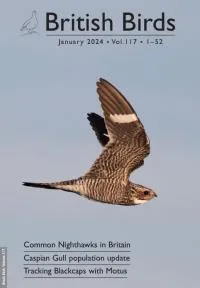
Seabird Population Trends and Causes of Change: 1986–2023
Author: Harris, S.J., Baker, H., Balmer, D.E., Bolton, M., Burton, N.H.K., Caulfield, E., Clarke, J.A.E., Dunn, T.E., Evans, T.J., Hereward, H.R.F., Humphreys, E.M., Money, S. and O’Hanlon, N.J.
Published: 2024
This report presents the latest seabird population trends in breeding abundance and productivity using data from the Seabird Monitoring Programme (SMP).The report documents changes in the abundance and productivity of breeding seabird species in Britain and Ireland from 1986 to 2023, and provides a detailed account of the 2021, 2022 and 2023 breeding seasons.This report includes both inland and coastal populations and trends from the Channel Islands, England, Isle of Man, Northern Ireland, Scotland, Wales and the Republic of Ireland, which are presented where sufficient data are available. The results from this report are used more broadly to assess the health of the wider environment, to inform policy and for conservation action.
21.11.24
Reports Research reports
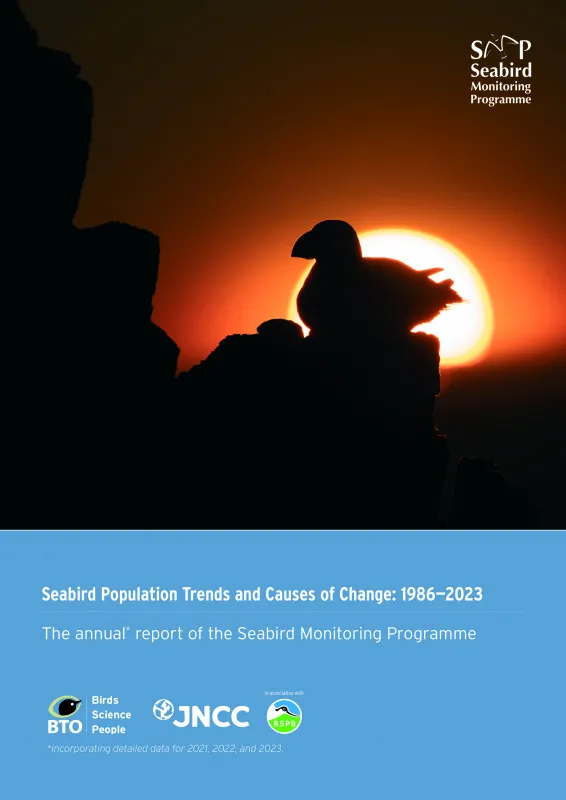
Seabird foraging ranges as a preliminary tool for identifying candidate Marine Protected Areas
Author: Thaxter, C.B., Lascelles, B., Sugar, K., Cook, A.S.C.P., Roos, S., Bolton, M., Langston, R.H.W. & Burton, N.H.K.
Published: 2012
The UK government is committed to establishing an ecologically coherent network of Marine Protected Areas (MPAs) to manage and conserve marine ecosystems. Seabirds are vital to such ecosystems, but until now these species have received little protection at sea. This is partly because there is scant information available on the oceanic regions they use at the different stages of their lifecycle. A new study led by the BTO, in partnership with the RSPB and Birdlife International, has sought to address this by bringing together work on how far UK-breeding seabirds travel from their colonies (typically in search of food for themselves or their chicks) during the breeding season.
01.01.12
Papers
